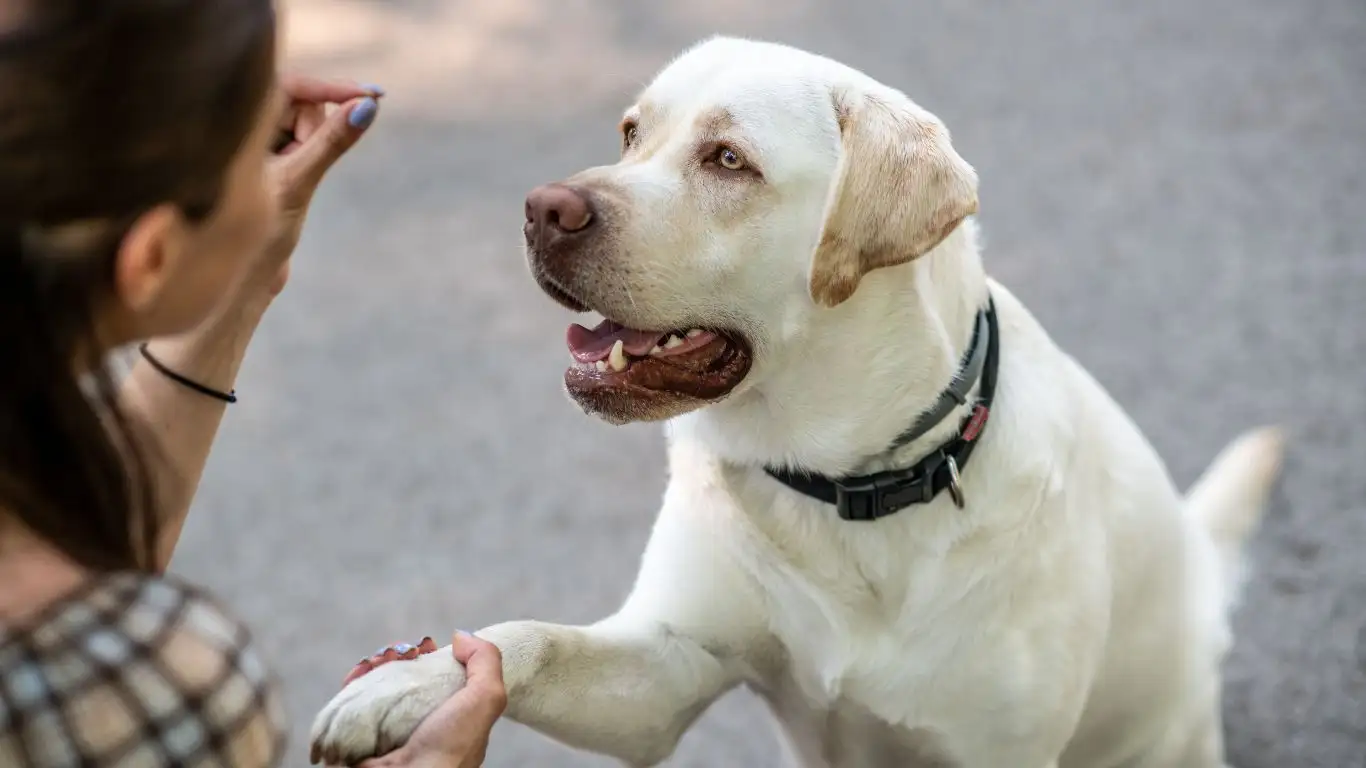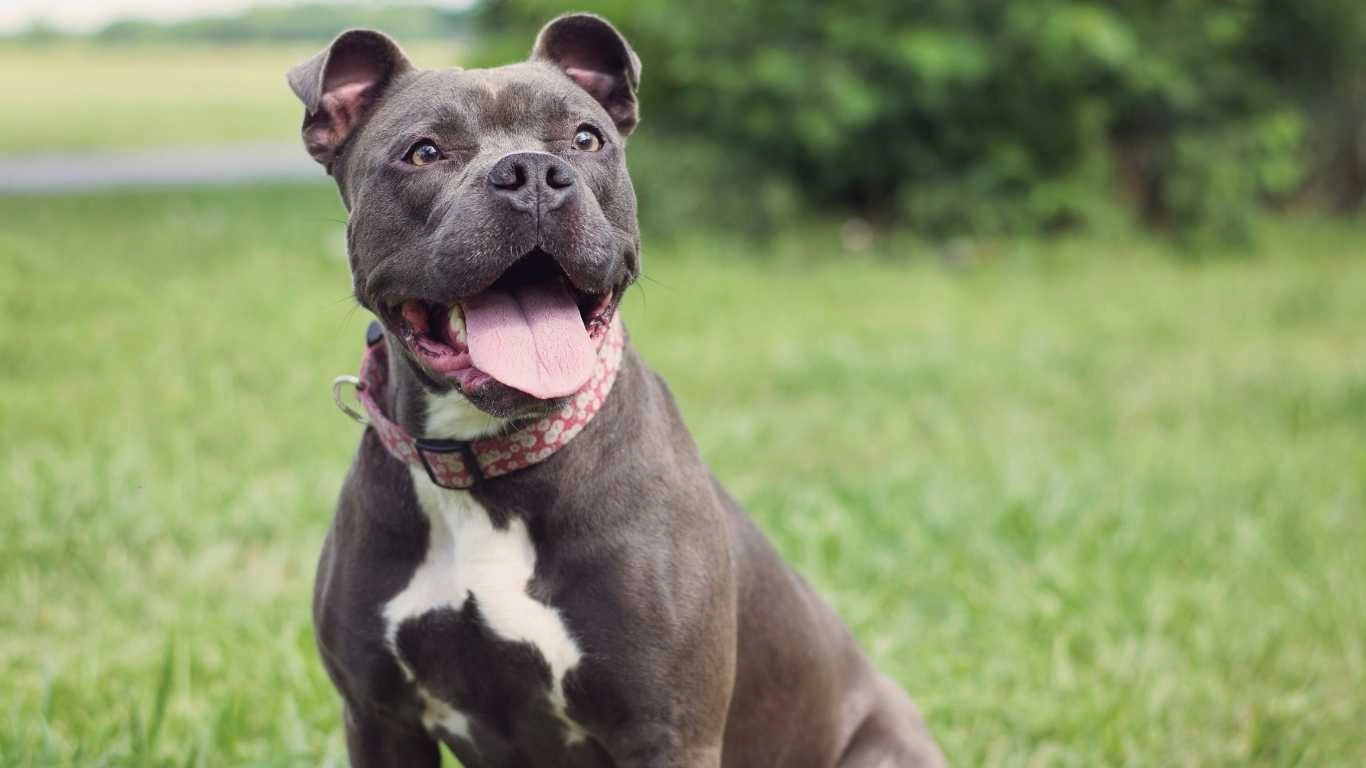Ultimate Dog Nutrition Guide: Avoid These Common Feeding Mistakes
As a Canine-Assisted Therapy Trainer with years of experience, I’ve seen countless dog owners make the same mistakes when it comes to feeding their pups. While it might seem like feeding is a no-brainer, there’s actually a lot that goes into it to ensure your dog is healthy, happy, and well-nourished. Unfortunately, many well-meaning owners unknowingly make feeding errors that could be affecting their dog’s overall health and behavior.
In this blog post, we’ll dive deep into some of the most common feeding mistakes I’ve observed in my practice and how you can avoid them. If you’re ready to make sure you’re providing the best care for your furry friend, stick around for these essential tips!
Understanding Your Dog’s Nutritional Needs

One of the first mistakes I see is when dog owners fail to understand the nutritional needs of their pets. Just like humans, dogs have unique dietary requirements depending on their breed, size, age, and activity level. A one-size-fits-all approach simply doesn’t work when it comes to feeding. For example, an active Border Collie will need more protein and calories compared to a sedentary Bulldog. This is why it’s essential to do some research or consult your vet to create a feeding plan tailored to your dog’s specific needs.
The Importance of Protein, Fats, and Carbohydrates
Dogs are omnivores, meaning they need a balance of protein, fats, and carbohydrates in their diet. Protein is crucial for building muscle and repairing tissues, while fats provide energy and help with vitamin absorption. Carbohydrates give your dog the fuel they need for everyday activities. Many owners make the mistake of not paying enough attention to these nutrients or opting for low-quality food that doesn’t provide the right balance. As a result, dogs may suffer from nutritional deficiencies that can lead to health issues like weight gain, skin problems, or digestive issues.
- Protein: Look for high-quality animal-based protein, such as chicken, beef, or lamb.
- Fats: Healthy fats like omega-3 fatty acids are vital for skin and coat health.
- Carbohydrates: Brown rice, sweet potatoes, and barley are great sources of energy.
Avoid These Common Feeding Mistakes

One of the most frequent mistakes I’ve noticed is how inconsistent feeding schedules can be. It’s easy to forget when you last fed your dog or just feed them when it’s convenient for you, but this inconsistency can mess with their metabolism and cause digestive problems. Establishing a consistent feeding routine is one of the easiest ways to improve your dog’s digestion, energy levels, and overall health.
Feeding on Irregular Schedules
Dogs thrive on routine, and feeding them at regular intervals helps regulate their digestive system. If you’re constantly changing the time you feed them, they may start to develop bad habits like begging for food or becoming anxious about meal times. This can also affect their metabolism, leading to overeating or under-eating, both of which can cause weight issues. Try to feed your dog at the same time every day and avoid skipping meals or overfeeding between scheduled meals.
Not Measuring Portions Correctly
Another common feeding mistake is not properly measuring your dog’s food. It’s tempting to just pour food into the bowl, but doing so can result in either overfeeding or underfeeding. Both have their downsides: overfeeding can lead to obesity and joint problems, while underfeeding can cause malnutrition and lethargy. Most dog food packaging provides a recommended serving size, but it’s a good idea to tailor this based on your dog’s activity level, age, and metabolism. If you’re unsure, ask your vet for guidance to make sure you’re giving your dog the right portion sizes.
- Use a measuring cup: Invest in a measuring cup to ensure you’re giving your dog the right amount of food.
- Adjust based on activity: Active dogs may require more food, while less active dogs need less.
- Check weight regularly: Monitor your dog’s weight to determine if their portions need adjusting.
Overreliance on Dry Kibble

While dry kibble can be convenient, many owners rely too heavily on it without incorporating other types of food. Dogs benefit from a balanced diet that includes both dry food and wet food or fresh ingredients. Mixing it up ensures your dog is getting a variety of nutrients, textures, and flavors, which can improve their overall health. Dogs are natural foragers, and they benefit from a diverse diet, just like we do!
Why You Should Diversify Your Dog’s Diet
Just like us, dogs can get bored of eating the same thing every day. Adding variety can boost their appetite, provide different nutrients, and even prevent them from developing food sensitivities. You don’t have to completely ditch dry food—just consider mixing in some fresh cooked vegetables, lean meats, or even some canned dog food to add more flavor and nutrients to their meals.
- Fresh vegetables: Carrots, peas, and spinach are great options.
- Cooked meats: Skinless chicken, turkey, or beef are lean protein sources.
- Canned food: Consider high-quality canned food that’s free of fillers and preservatives.
The Danger of Overfeeding Treats
Treats are an essential part of training and bonding with your dog, but overdoing it can lead to serious health issues like obesity. Many dog owners make the mistake of using treats too liberally, whether it’s for training, affection, or just because. The key is moderation—treats should make up no more than 10% of your dog’s daily caloric intake. Always read the label to ensure you’re offering healthy treats and avoid giving them human food, especially those that are toxic to dogs.
The Role of Hydration in Your Dog’s Diet

While we often focus on what goes into our dog’s bowl, one critical aspect of their diet that sometimes gets overlooked is hydration. Just like nutrition, water is essential to your dog’s overall health. Many owners assume that their dog will drink when they’re thirsty, but it’s not always that simple. Some dogs, particularly older ones or those with certain health conditions, may not drink enough water on their own. It’s up to us as pet parents to make sure they stay properly hydrated, which can greatly affect their energy levels, digestion, and even their skin and coat condition.
How Much Water Does Your Dog Need?
The amount of water your dog needs depends on their size, activity level, and diet. For example, an active dog or one who eats dry food will need more water than a smaller or less active dog. As a general rule of thumb, dogs should drink about 1 ounce of water per pound of body weight each day. If your dog is more active or eats primarily dry kibble, they may need more. On the other hand, if you feed wet food, your dog may drink less because wet food provides additional moisture.
- Monitor water intake: Make sure your dog always has access to fresh, clean water.
- Hydration and activity: After playtime or exercise, encourage them to drink water to stay hydrated.
- Hydration and health: Dehydration can lead to urinary tract issues, kidney problems, and more.
Understanding Special Diets for Dogs

There are instances when your dog may require a special diet. Whether it’s due to allergies, a medical condition, or simply advancing age, tailoring your dog’s diet can make all the difference in their quality of life. For example, if your dog suffers from food allergies, you may need to choose a food that’s free from common allergens like grains or certain proteins. Likewise, senior dogs might need a diet that’s easier on their digestion or joints.
Common Health Issues and Diet Adjustments
If your dog has any chronic health conditions, such as diabetes, obesity, or food sensitivities, it’s crucial to adjust their diet accordingly. Working with a veterinarian to create a meal plan that addresses these issues will ensure that your dog gets the nutrients they need without exacerbating any existing problems. I’ve worked with clients whose dogs had skin problems due to allergies, and after switching to a grain-free or limited-ingredient diet, their pups experienced dramatic improvements in coat condition and reduced itching.
Senior Dogs and Their Nutritional Needs
As dogs age, their nutritional needs change. Senior dogs often have slower metabolisms, which can make it easier for them to gain weight. To help manage this, senior dog food formulas typically have fewer calories but still provide the necessary nutrients to maintain muscle mass. Moreover, many senior diets include joint-supporting ingredients like glucosamine and chondroitin, which can help with arthritis and mobility issues. If your dog is aging, it’s worth switching to a senior-specific food to give them the best chance at a long, healthy life.
- Adjust calorie intake: Monitor your senior dog’s weight to avoid unnecessary weight gain.
- Joint support: Look for foods with glucosamine and chondroitin to promote healthy joints.
- More fiber: Senior dogs may benefit from higher fiber content to aid digestion.
How to Avoid Feeding Your Dog Human Food

It’s no secret that dogs love to beg for scraps from our plates. However, feeding your dog human food, even in small amounts, can be harmful to their health. Many foods we eat are toxic to dogs, including chocolate, grapes, onions, and garlic. Even something as simple as a piece of bread can upset your dog’s stomach, especially if they have food sensitivities. The problem with feeding your dog human food is that it can not only be harmful but can also create bad habits. They may start begging more often, which can be annoying and lead to unhealthy eating patterns.
Common Human Foods That Are Toxic to Dogs
While we may not think twice about sharing a bit of our meal with our dogs, it’s crucial to know which foods are off-limits. Here are some common foods that are toxic to dogs and can cause serious health issues:
- Chocolate: Contains theobromine, which can lead to seizures, heart problems, and even death.
- Grapes and raisins: Can cause kidney failure in dogs.
- Onions and garlic: Can damage red blood cells and lead to anemia.
- Alcohol: Even small amounts of alcohol can cause dangerous side effects like vomiting and respiratory failure.
The Risk of Table Scraps and Fatty Foods
Even if the food isn’t toxic, table scraps and fatty foods can still pose a risk to your dog. Rich, fatty foods can lead to pancreatitis, a painful and potentially fatal inflammation of the pancreas. Additionally, feeding your dog human food regularly can lead to obesity. The extra calories they’re consuming might not seem like much, but over time, they add up and can lead to serious weight issues. If you want to spoil your dog with a treat, opt for dog-safe options that are formulated for their specific needs.
Remember, just because your dog looks at you with those pleading eyes doesn’t mean they should get a bite of your sandwich! It’s much healthier to stick to dog-specific treats, and if you want to give them a special snack, try something like a dog-safe peanut butter treat or a small piece of cooked chicken.
The Impact of Feeding Habits on Your Dog’s Behavior

Feeding habits can play a crucial role in shaping your dog’s behavior. Believe it or not, what and how you feed your dog can influence their energy levels, mood, and even their interactions with others. For example, a dog that isn’t getting the proper nutrients might feel sluggish or irritable, leading to undesirable behaviors. On the other hand, a balanced and well-thought-out diet can promote better behavior, increased focus, and a more active, happy pup.
The Connection Between Food and Energy Levels
Have you ever noticed how your dog seems extra energetic after a healthy meal? That’s because the right nutrients directly affect your dog’s energy levels. When dogs eat a balanced diet rich in high-quality protein, healthy fats, and carbohydrates, they have the fuel they need for physical activity. If your dog’s food is lacking in nutrients, they might start feeling sluggish or have trouble staying active throughout the day. Similarly, if they’re eating too much sugar or overly processed foods, they could experience energy crashes that make them less active or more moody.
- Protein: Helps with energy production and muscle maintenance.
- Healthy Fats: Provide long-lasting energy throughout the day.
- Carbohydrates: Provide immediate energy for activity and play.
Food and Behavioral Issues
What many people don’t realize is that poor nutrition can also contribute to behavioral issues in dogs. I’ve worked with a number of clients who’ve noticed a drastic improvement in their dog’s behavior after switching to a more nutritious diet. For example, I had a client with an anxious dog who was often destructive and jittery. After adjusting her dog’s diet to include more protein and omega-3 fatty acids, we saw a calmer, more balanced dog within a few weeks. Diet can also affect a dog’s ability to focus, so if your dog is having trouble with training, their food could be the culprit.
Reading Dog Food Labels: What to Look For

When selecting the right food for your dog, it’s important to understand how to read the labels on dog food bags. Not all pet food is created equal, and many products contain fillers or ingredients that can be harmful or provide little nutritional value. Take a close look at the ingredients list and make sure the first few items are high-quality sources of protein, like chicken, lamb, or beef. Avoid foods that list vague ingredients such as “meat by-products” or “animal digest.” These can be signs that the food isn’t as high-quality as it should be.
What Should Be at the Top of the Ingredients List?
Ideally, the first few ingredients in your dog’s food should be whole proteins, such as chicken, turkey, beef, or fish. These are essential for your dog’s muscle development and overall health. Whole grains like brown rice or oats are also great, but they should be followed by protein sources. Vegetables and fruits like sweet potatoes and blueberries are excellent additions, as they provide essential vitamins and antioxidants. You’ll also want to look for healthy fats, such as omega-3 fatty acids, which support skin health and a shiny coat.
- High-Quality Protein: Look for real meat, poultry, or fish as the first ingredient.
- Whole Grains: Brown rice, oatmeal, and barley are good sources of fiber and energy.
- Healthy Fats: Omega-3 and omega-6 fatty acids support skin, coat, and joint health.
What to Avoid in Dog Food
There are also certain ingredients you’ll want to avoid when choosing dog food. Stay away from foods with too many fillers, such as corn, soy, and wheat, as these can be difficult for some dogs to digest and may not offer much nutritional value. Artificial colors, flavors, and preservatives are also best left out of your dog’s diet, as they can contribute to health problems in the long run. Additionally, avoid foods that contain a lot of sugar or unnecessary additives. While dogs might enjoy the taste, it’s not doing them any favors in terms of their health.
- Avoid fillers: Corn, soy, and wheat can cause digestive issues.
- No artificial additives: Say no to artificial colors, flavors, and preservatives.
- No sugar: Excess sugar can lead to obesity and other health problems.
Consider Consulting a Veterinarian for Personalized Advice
One of the best things you can do for your dog’s diet is consult with your veterinarian. They can provide personalized recommendations based on your dog’s age, breed, weight, and health history. Many pet owners make the mistake of assuming that they can pick any food off the shelf, but each dog’s needs are unique. Your vet can help you navigate the overwhelming choices available and ensure that your dog is eating the best possible diet for their specific needs. I always recommend getting professional advice, especially if your dog has any underlying health concerns or special dietary requirements.
Veterinarians can also help you with food allergies, sensitivities, and weight management. If your dog has a health issue like obesity, your vet may suggest a weight-loss food or help you create a calorie-controlled feeding plan. This will ensure your dog gets all the nutrients they need without overeating. Over the years, I’ve seen countless dogs benefit from tailored nutrition plans that helped them live longer, healthier lives.
References
Disclaimer
The information provided in this article is for informational purposes only. It is not intended to replace professional veterinary advice, diagnosis, or treatment. Always consult your veterinarian or a qualified pet care professional for advice regarding your dog’s specific dietary needs. The content shared here is based on my personal experience and should not be taken as a one-size-fits-all approach. Every dog is different, and what works for one may not be suitable for another.






